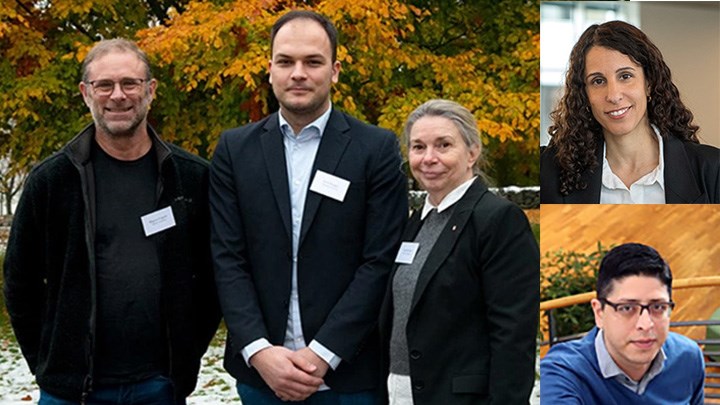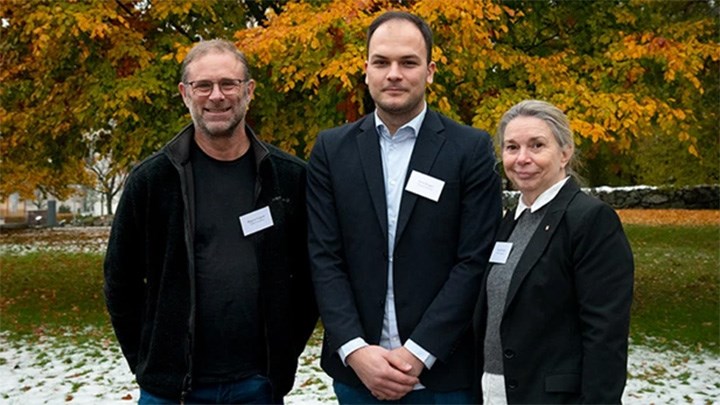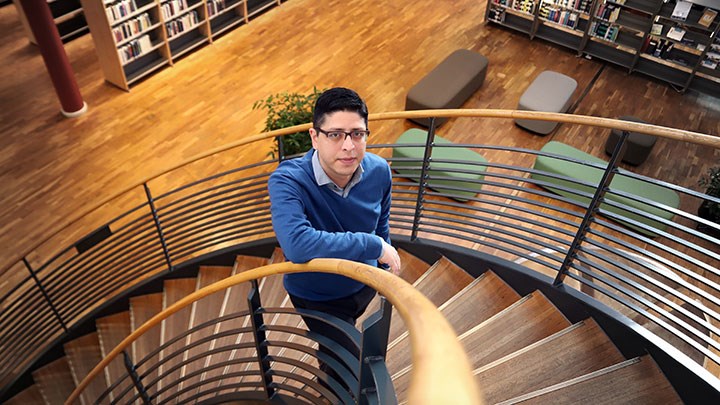Innovative research from Örebro University on IVA’s top 100 list

Örebro researchers Magnus Engwall, Andi Alijagic, Eva Särndahl, Amy Loutfi, and Hadi Banaee are all included in the Royal Swedish Academy of Engineering Sciences’ annual top 100 list of innovative research projects.
Three Örebro projects are included in the Royal Swedish Academy of Engineering Sciences’ top 100 research projects with the greatest potential to benefit society: NanoSafety2, Green-AI, and Campus.AI. “An honour. This strengthens my commitment to using AI for the benefit of society,” says Professor Amy Loutfi, who leads the Green-AI project.
Valuable research findings should extend beyond academia and contribute to society. Therefore, the Royal Swedish Academy of Engineering Sciences (IVA) recognises the country’s 100 most innovative research projects each year, focusing on their potential to impact society significantly.
NanoSafety2 reduces the health and environmental risks of 3D printing

Additive manufacturing, also called industrial 3D printing, is becoming increasingly common. At the same time, there is considerable uncertainty about the risks this technology poses to human health, particularly regarding the nanoparticles formed during 3D printing. These technical advances have yielded a need for new safety standards and better testing methods to assess health risks.
As an interdisciplinary project, NanoSafety2 pulls together experts from multiple disciplines, aiming to future-proof industry and society from emerging health and environmental risks by incorporating particle and chemical safety into new 3D printing methods. NanoSafety2 is led by researchers Eva Särndahl, Magnus Engwall, and Andi Alijagic.
“Being included on IVA’s top 100 list is a tremendous recognition. This means that the NanoSafety2 project is acknowledged as an important initiative with great potential to influence sustainable industrial methods. An IVA recognition increases visibility, opens doors to new collaboration, and potential funding opportunities, as it highlights the project’s relevance to societal challenges, especially in protecting health while fostering industrial innovation,” says Andi Alijagic, researcher in biology and biomedicine.
Green-AI – enhancing cities to address climate change

Having close proximity to nature is beneficial for public health. In addition, having green spaces in urban areas contributes positively to the environment and climate. The concept of a “green area factor” is used as an instrument in urban planning to ensure compliance with requirements for access to green spaces within a city. Calculating the green area factor has been time-consuming, relying on manual groundwork.
In the Green-AI project, AI researchers at Örebro University, in collaboration with urban planners in Örebro Municipality, developed an AI model that calculates the green area factor by automatically analysing images from drones and satellites to distinguish green spaces from other areas. The AI tool supports decision-making, helping cities achieve green space targets and manage climate change. The project is led by Amy Loutfi, professor of computer science.
“Receiving this recognition is incredibly meaningful to me, as it recognises the potential of artificial intelligence to transform urban planning for a sustainable future. It affirms Green-AI’s value in tackling critical challenges related to urban health and the environment. The IVA Top 100 recognition enhances my ability to collaborate with city planners and environmental agencies, amplifying the project’s impact. It’s an honour that fuels my commitment to using AI for societal benefit and inspires me to keep pushing for greener, healthier cities,” says Amy Loutfi.
Campus.AI helps property owners use spaces more efficiently

The Campus.AI project combines sensors and the digital twin on Örebro University’s campus area with artificial intelligence, enabling the analysis of how people interact with various environments. The AI algorithm can predict indoor temperatures several days in advance.
By understanding how various spaces and environments are used in reality, property owners can better address challenges related to energy efficiency and sustainable usage of their buildings. The project is led by Hadi Banaee, researcher in computer science, in collaboration with Akademiska Hus.
“Being on IVA’s Top 100 list is a true honour and validation of Campus.AI’s impact. This recognition highlights the importance of AI in advancing sustainability and energy efficiency on campuses, inspiring further collaboration with other experts to create meaningful change. It’s exciting to be part of a project that promotes smarter resource use and reduces environmental impact in educational spaces,” says Hadi Banaee.
Text: Jesper Eriksson
Photo: Jesper Eriksson and Jesper Mattsson
Translation: Jerry Gray
